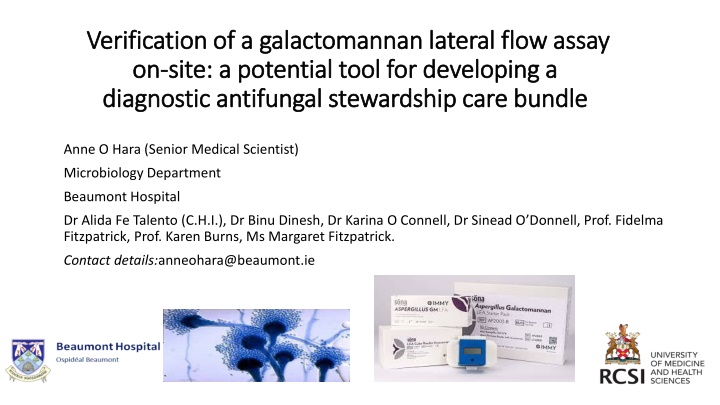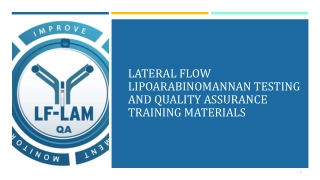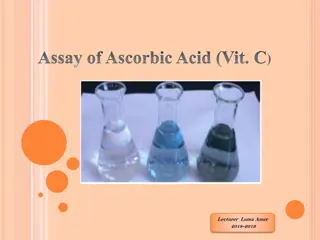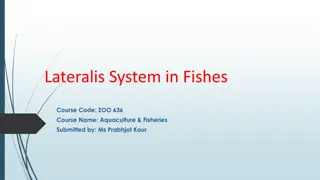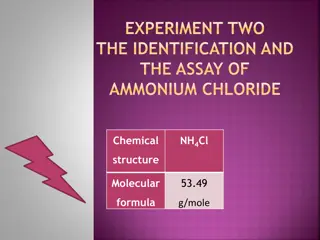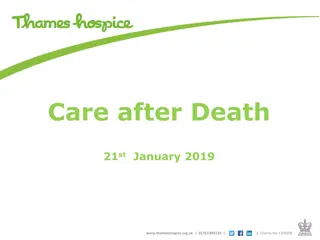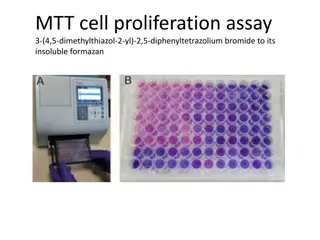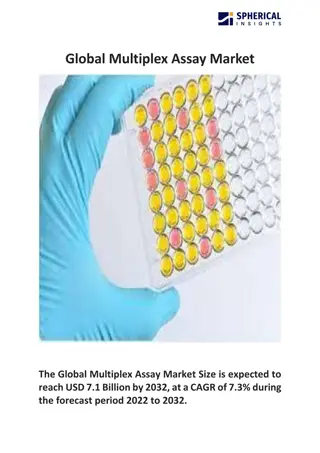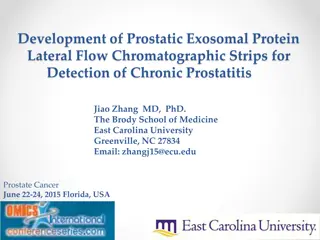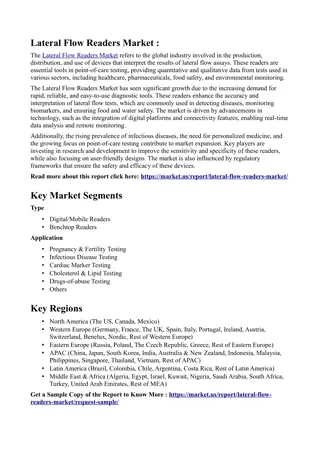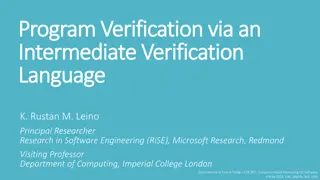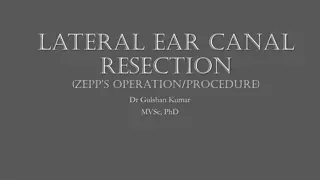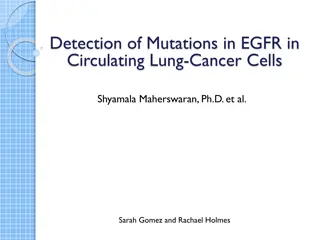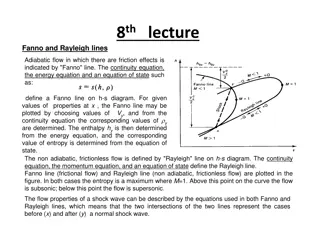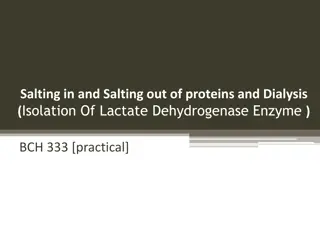Verification Verification of a galactomannan lateral flow assay of a galactomannan lateral flow assay
COVID-19-associated pulmonary aspergillosis (CAPA) presents challenges in timely diagnosis. Learn how implementing a Galactomannan Lateral Flow Assay onsite improved turnaround time and accessibility of results, leading to early treatment and better patient outcomes.
Download Presentation

Please find below an Image/Link to download the presentation.
The content on the website is provided AS IS for your information and personal use only. It may not be sold, licensed, or shared on other websites without obtaining consent from the author.If you encounter any issues during the download, it is possible that the publisher has removed the file from their server.
You are allowed to download the files provided on this website for personal or commercial use, subject to the condition that they are used lawfully. All files are the property of their respective owners.
The content on the website is provided AS IS for your information and personal use only. It may not be sold, licensed, or shared on other websites without obtaining consent from the author.
E N D
Presentation Transcript
Verification Verification of a galactomannan lateral flow assay of a galactomannan lateral flow assay on on- -site: a potential tool for developing a site: a potential tool for developing a diagnostic antifungal stewardship care bundle diagnostic antifungal stewardship care bundle Anne O Hara (Senior Medical Scientist) Microbiology Department Beaumont Hospital Dr Alida Fe Talento (C.H.I.), Dr Binu Dinesh, Dr Karina O Connell, Dr Sinead O Donnell, Prof. Fidelma Fitzpatrick, Prof. Karen Burns, Ms Margaret Fitzpatrick. Contact details:anneohara@beaumont.ie
Background COVID-19-associated pulmonary aspergillosis (CAPA) is associated with significant morbidity. Availability of early diagnostic tests aids prompt treatment of suspected cases. Detection of galactomannan (GM) in serum or bronchoalveolar lavage fluid (BALF) is a mycological criteria of invasive pulmonary aspergillosis. During the first wave of SARS-CoV-2, we audited the management of patients with suspected CAPA in critical care and identified several areas for improvement. We found that the average turnaround time (TAT) for GM on BALF or serum samples was 10 days. Additionally these results were not accessible on the hospital computer system (BHIS and PIPE) Aim. Our aims were to provide a more rapid TAT for GM results by verifying a CE marked GM Lateral Flow Assay (LFA) on site for the detection of Aspergillus GM to facilitate appropriate antifungal therapy. have the results visible on BHIS and PIPE have the test accredited to ISO15189 standards. Change initiative Following successful verification (high level concordance with reference laboratory results) we have added the GM LFA to our laboratory repertoire (performed twice weekly) and have received Irish National Accreditation Board (INAB) accreditation for this assay.
P Problem Long TAT to detection. Results not accessible on hospital computer system (BHIS and PIPE) I Intervention Verify a CE marked GM LFA. Submit for INAB accreditation. C Comparison Group Samples (Sera and BALF) with known results from St James s Hospital (SJH) and The Mycology Reference Laboratory Bristol (MRLB) n=57 O Outcomes Confirm concordance with reference tests; Decrease TAT to detection of Aspergillus GM; Accessibility of results on the hospital computer system (BHIS and PIPE); Achieve INAB accreditation. Results: % concordance and discordance for all samples compared with SJH and MRLB. Results were read visually and using a digital Cube Reader TAT (Days) Concordance Discordance* 12 10 Visual Read (2 investigators) 74% 26% 8 Pre-intervention 6 Digital Read out 93% 7% Post- intervention Max 4 Post- intervention Min 2 *All discordant results were close to the cut off values (0.5 for sera and 1.0 for BALF) . Discordant results were with sera INAB accredited 0 Max Min Pre-intervention Post- intervention What worked well: Use of the Digital Cube Reader improved the % concordance, removed subjectivity of test and allows for a Galactomannan Index (GM) to be reported. This value is used to monitor patient treatment
Sustainability: Improvement will be sustained and standards assured by maintaining INAB accreditation to ISO 15189 standards. Value to patients: Significant decrease in TAT from an average of 10 days to same day results (maximum TAT of 3 days) which provides Earlier diagnosis of invasive pulmonary aspergillosis and initiation of appropriate antifungal therapy Earlier discontinuation of unnecessary antifungal therapy Less exposure to antifungal agents and the associated adverse effects Decrease emergence of antifungal resistance Results are available on BHIS and PIPE as apposed to paper results from MRLB. Spread: This work has been presented at the Irish Society of Clinical Microbiologist national conference to the staff of the Microbiology Department of Beaumont Hospital as part CPD for CORU Additional information: GM LFA has now been incorporated into a diagnostic care bundle which facilitates more timely diagnosis of invasive aspergillosis in COVID-19 and other patient cohorts, ultimately improving patient management.
